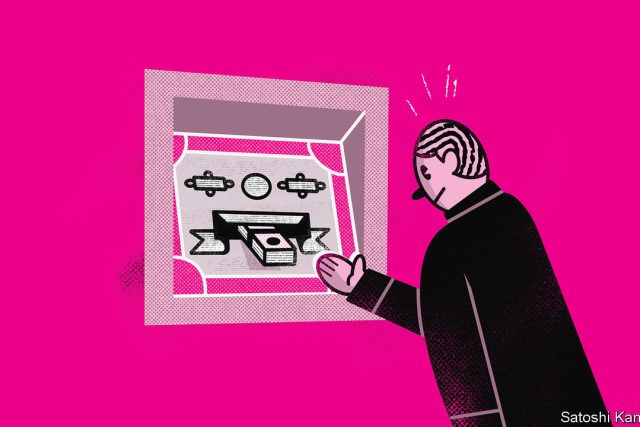Meta celebrated its 20th anniversary this week as all good and mature businesses should: by paying shareholders a dividend. In lieu of a birthday bash, the Silicon Valley stalwart marked its coming of age with a stock buy-back and, for the first time, by offering a dividend. Investors will receive 50 cents per share. Markets partied, with Meta’s share price rising by 20%, adding more than $200bn to the company’s market capitalisation on the day of the announcement.
The dividend, a 17th-century innovation, was a mainstay of markets for much of the 20th century. Stockpickers used the cash they earned from dividends to price shares. The Bloomberg terminal of its time, Moody’s Analyses of Investments, evaluated the giants of American rail on dividends per mile of railroad laid. But the years have not been kind to the once-dominant dividend. Since the early 1990s, regular cash payments to shareholders have been in retreat, losing out to stock buy-backs, in which management uses earnings to repurchase their stock, boosting the share price.
Managers love buy-backs because they cut the number of shares on the market, lifting earnings per share—and thus often executive compensation, too. A higher stock price is all the more enticing if management is compensated with the option to buy company shares. In the past, investors have also preferred buy-backs. Capital gains are taxed at a lower rates than dividend income in some countries, and investors like owning an appreciating asset because they can choose when to sell and pay the taxman.
Meta’s decision to hand earnings to its minority owners received a raucous reception, however. It is just the latest sign that markets are coming to appreciate dividends. Those from s&p 500 firms rose to $588bn last year, up 22% against three years ago. Investors have put $316bn in dividend-focused exchange-traded funds globally, almost doubling their size over the same period. An analyst at Bank of America speculates that 2024 could be “a banner year for dividends”.
Why the shift? Daniel Peris of Federated Hermes, an investment house, and author of a new book, “The Ownership Dividend”, puts the decline of cash payments down to decades of falling interest rates and Reagan-era changes to buy-back rules. As the risk-free rate fell, returns on bonds and savings diminished, and so did the advantages of holding cash. Cheap money enabled investors to plough capital into non-dividend-paying growth stocks.
In that time, writes Mr Peris, highfalutin financiers came to see the dividend as the preserve of “widows and orphans”. Only staid companies, like banks and utilities, tended to bother with them. Yet today’s economic environment looks different. Interest rates have risen. Startups without a path to profitability are failing to win over investors. And the Biden administration has levied a tax on buy-backs. It is currently meagre but officials hope it will rise.
Perhaps cash is once again king. Higher interest rates mean that investors can put income to work. Many are enjoying respectable, risk-free returns in money-market funds. Higher risk-free rates also lower the value of future earnings in today’s dollars, meaning some investors will prefer cash in hand today to higher stock prices tomorrow.
A similar calculation holds true for management, whose options for deploying cash have become more limited. Higher rates demand higher expected returns from long-term investments and discourage taking on debt to fund share repurchases. The Biden administration’s distrust of corporate takeovers means that acquisitions are less viable. Many firms are therefore considering how best to return dollars to their shareholders.
Investors have reason to be careful, however. As economists argue, earning a dividend is like taking cash out of an ATM—it does not make you richer. If a company were to reinvest its earnings rather than pay out a dividend, it ought to make more money in future and thus deliver a higher share price. As a consequence, investors should be equally happy with either option.
A firm that issues a dividend is signalling that it has confidence in its future cash flows, since shareholders often assume dividends will be permanent and managers are loath to cut them. Yet such a move also suggests that bosses have nowhere better to invest company cash, which bodes poorly for a firm’s growth. Although high-yielding dividend stocks offer a reliable income stream, they are unlikely to reward owners with a capital gain worth celebrating.■
Read more from Buttonwood, our columnist on financial markets:
Bitcoin ETFs are off to a bad start. Will things improve? (Feb 1st)
Investors may be getting the Federal Reserve wrong, again (Jan 24th)
Wall Street is praying firms will start going public again (Jan 18th)
Also: How the Buttonwood column got its name




The Most Read
Сryptocurrencies
Bitcoin and Altcoins Trading Near Make-or-Break Levels
Financial crimes
Thieves targeted crypto execs and threatened their families in wide-ranging scheme
Financial crimes
Visa Warning: Hackers Ramp Up Card Stealing Attacks At Gas Stations
News
Capitalism is having an identity crisis – but it is still the best system
Uncategorized
The 73-year-old Vietnamese refugee is responsible for bringing Sriracha to American consumers
Uncategorized
Electric Truckmaker Rivian, Backed By Amazon, Ford, Raises Whopping $1.3 Billion